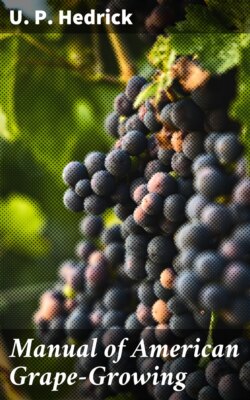Читать книгу Manual of American Grape-Growing - U. P. Hedrick - Страница 20
На сайте Литреса книга снята с продажи.
The Niagara region.
ОглавлениеFifty miles due north of the Chautauqua belt, across the end of Lake Erie and the narrow isthmus of Niagara, is a smaller belt on the southern shore of Lake Ontario so similar in soil, climate and topography that in these respects the two regions might be considered as identical. This is the Niagara region, Canada's chief grape-producing area. It is bounded on the north by Lake Ontario; on the south, at a distance of one to three miles by the high Niagara escarpment; to the east it crosses the Niagara River into New York; and in the west tapers to a point at Hamilton on the westward extremity of Lake Ontario. Here, again, is the influence of climate distinctly manifested. As this belt passes into New York, it widens and the influence of Lake Ontario is less and less felt to the eastward, and in consequence grape-growing becomes less and less profitable.
There were, according to the Ontario Bureau of Industries, in 1914, about 10,850 acres of grapes in the Niagara region in Canada, and possibly 4,000 acres more near the Niagara River and along the shore of Lake Ontario in New York. The Niagara grape originated on the American side of the Niagara region and is here planted more extensively than elsewhere. Grape-growing in this region is similar in all respects to that of the Chautauqua belt, the same varieties and nearly identical methods of pruning, cultivation, spraying and harvesting being employed. The crop is chiefly used as table-grapes but the grape-juice industry is growing.
